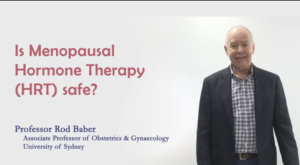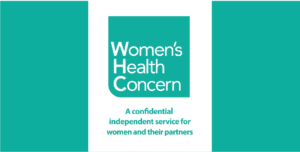While often referred to as the ‘male’ hormone, testosterone is a biologically active hormone in women too.
It can be used as part of menopausal hormone treatment (MHT).
What does testosterone do?
Testosterone is thought to have an effect on our libido and our brain function. Like oestrogen, testosterone levels drop in the perimenopause and menopause.
Currently, the evidence for testosterone to treat symptoms associated with perimenopause and menopause is unclear.
The National Institute for Health and Care Excellence (NICE) published guidelines in the United Kingdom in 2015, supporting the prescribing of testosterone for women on established MHT with persistent and distressing low libido1.
Testosterone, in addition to standard MHT, may benefit mood, reduce anxiety, improve memory and brain fog, and improve muscle mass – but we do not have sound evidence to support this at this time.
An unpublished audit on 1200 women already taking HRT did show a statistically significant improvement in reducing anxiety and improvement in depression with the addition of testosterone to their treatment regime2.
Is it safe for women to use testosterone?
The addition of testosterone to a person’s individualised treatment regime requires discussion with a health care professional.
Women may be concerned that testosterone use may cause voice changes, hair growth, balding, increased risks of breast cancer or liver and heart issues. While these side effects may occur when taking testosterone orally and with excessive use, they do not occur when taking testosterone in the normal range for females.
When it is delivered through the skin (trans dermally) and with appropriate patient assessment, education and blood test monitoring, it can be a safe treatment.
Testosterone is currently licensed for use by men but is an “off license” medication for women in New Zealand.
For more information about the use of unapproved or “off license” medications, please click on this link
Who should consider treatment with testosterone?
Discuss this option with your healthcare professional if you have:
- hypoactive sexual desire disorder (HSDD);
- a history of premature ovarian insufficiency (menopause before the age of 40); or
- perimenopausal or menopausal symptoms and wish to try testosterone.
What testosterone preparations are available and how are they applied?
Testosterone is available in a cream and a gel in New Zealand.
We usually prescribe the gel (Testagel) for women suffering from low libido causing them distress. Testagel is subsidised.
The cream (Androfeme 1)is an unsubsidised medication and comes at a cost to the patient. It may take three to six months of treatment to assess the benefit.
How to apply Testagel
How to apply Androfeme 1 cream
References
- NICE (2015), ‘Menopause: diagnosis and management’, www. nice.org.uk/guidance/ng23
- Clinical audit conducted by Newson Health, 2023 (unpublished)



